
There are many ways to vary from the ideal arm carriage. Fortunately, by focusing on the correct technique we can fix many of the errors. Let’s start by looking at good and bad arm carriage. Observe the walker in the middle. Her arm swing maintains a constant angle between the upper arm and lower arm as the hand traces from the middle of her chest to just behind the hip (Figure 17-2). In contrast, the walker in Figure 17-1 is swinging their arms too far in front and behind. We know it's too far because their wrist is in front of their ankle. Likewise, the walker to in Figure 17-3 also isn’t swinging her arms through a far enough range of motion and thus limits their hip rotation and stride length.
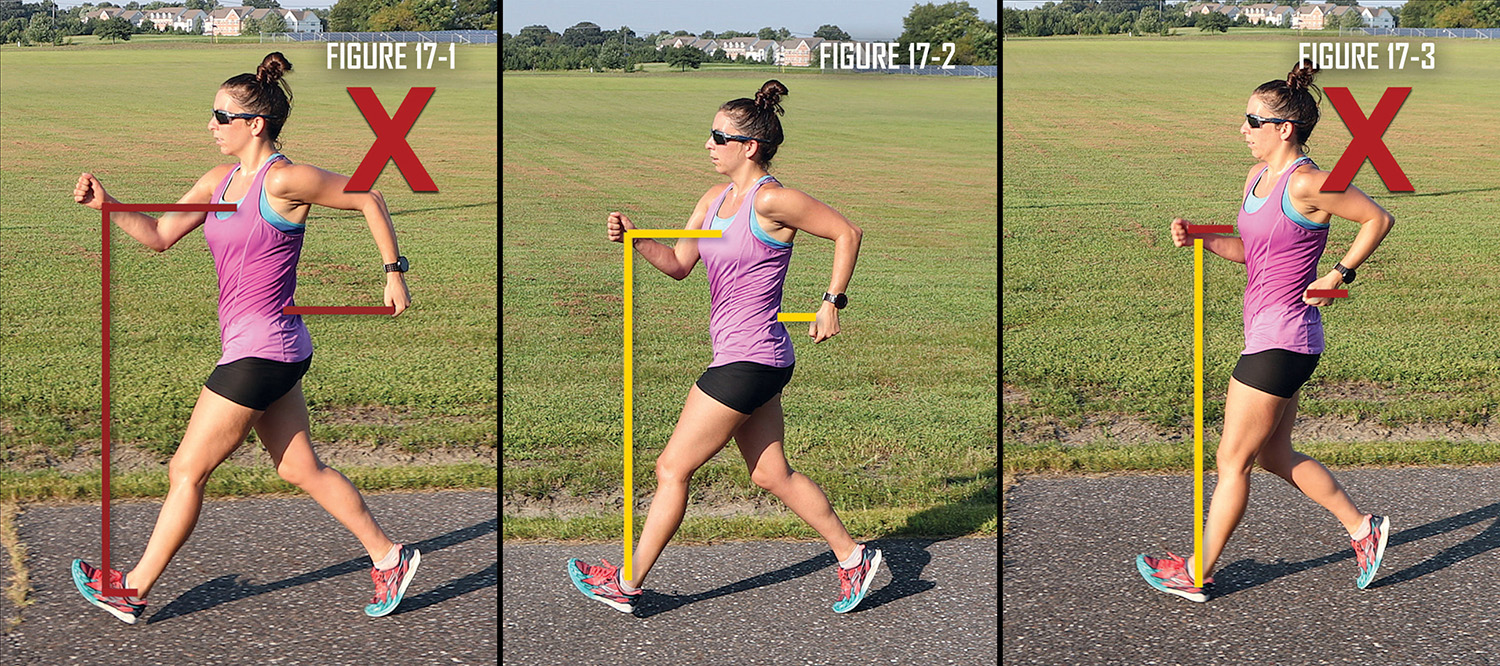
Walkers also have issues maintaining a constant angle between their upper and lower arm. Observe how the left arm angle of the walker in Figure 17-5 & 17-7 increases as she swings backward and decreases as she swings forward. This is a waste of energy and the excessive motion could attract the unwanted eye of a judge. Observe the proper constant arm angle in Figures 17-4 and 17-6.
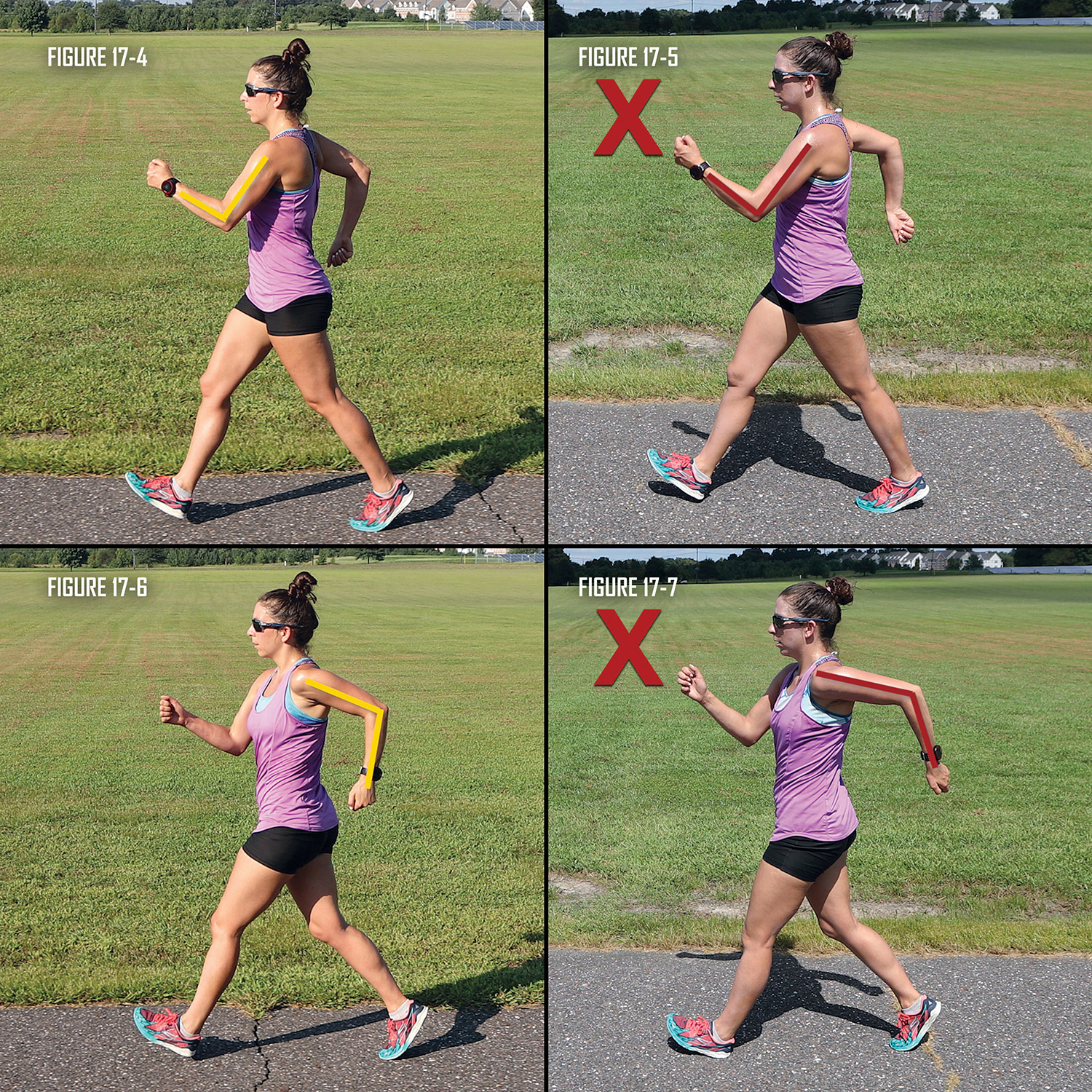
Observing walker’s from the side gives a very two dimensional representation. Observe walkers from the front. It’s important to make sure the arms are not robotic as shown in the walker in Figure 17-8 or crossing over too much as with the walker in Figure 17-10. Moving directly across the body or bringing the arm forward too straight inhibits forward hip rotation. Observe the proper arm swing in Figure 17-9.
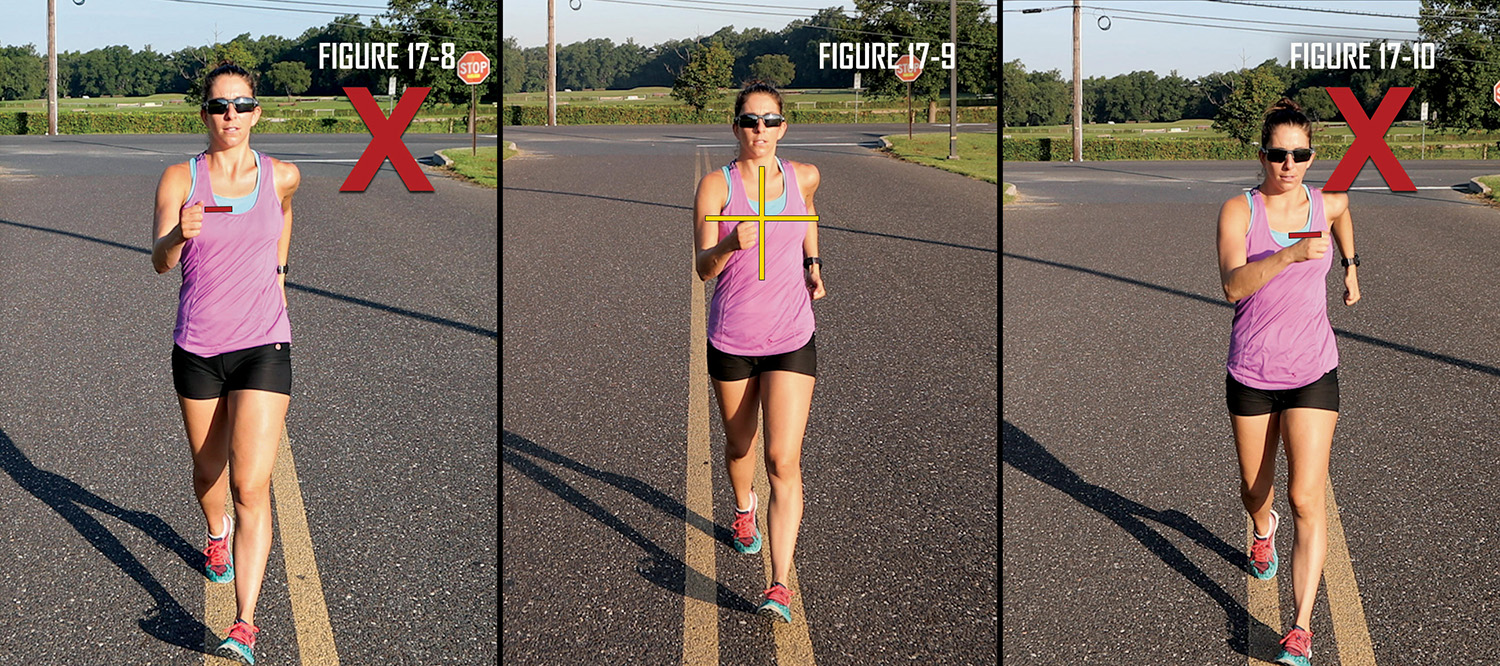
We can also fine tune the arm carriage in other ways. Look how the walker in Figure 17-12 has his arms at an angle away from the torso. This is a waste of energy. Instead, you should look more like the walker in Figure 17-11.

Fortunately, the cures are basically the same for all these ailments. The following focus tips can be practiced while walking or in front of a mirror.
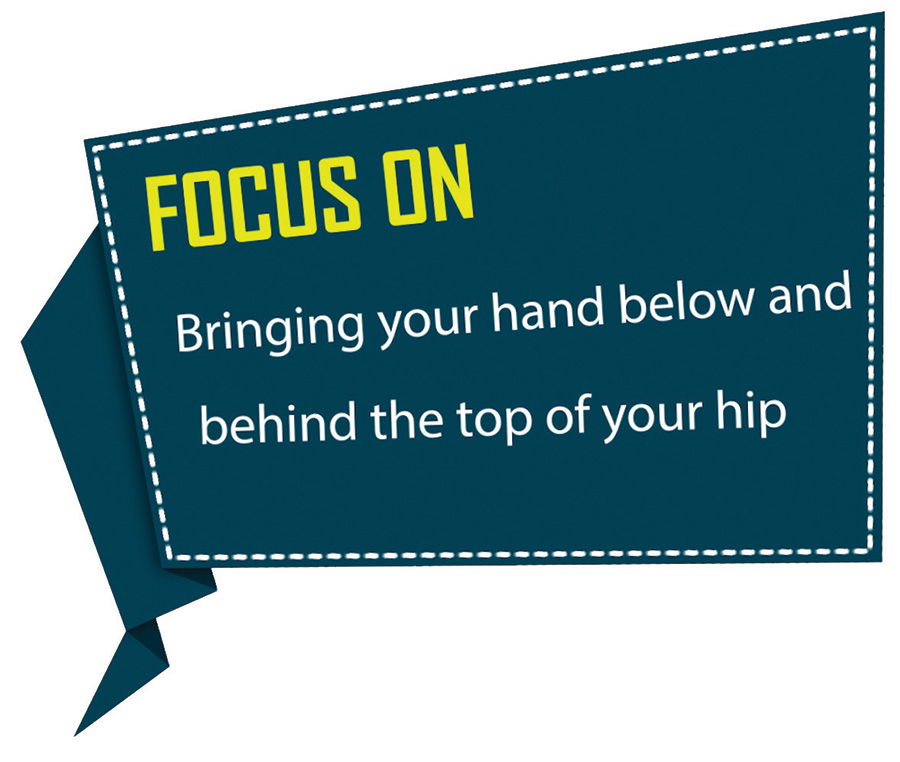
Bringing your hand back below and behind the hip is essential to achieve proper arm motion, as well as to make it easier to reach forward with your hips. If your hands do not reach back far enough, your hands will not come forward to the proper position. In addition, your hip drive is diminished. To increase the range of motion through which your arms and hands travel, increase the angle between your upper and lower arm. To decrease the range of motion through which your arms and hands travel, decrease the angle between your upper and lower arm.
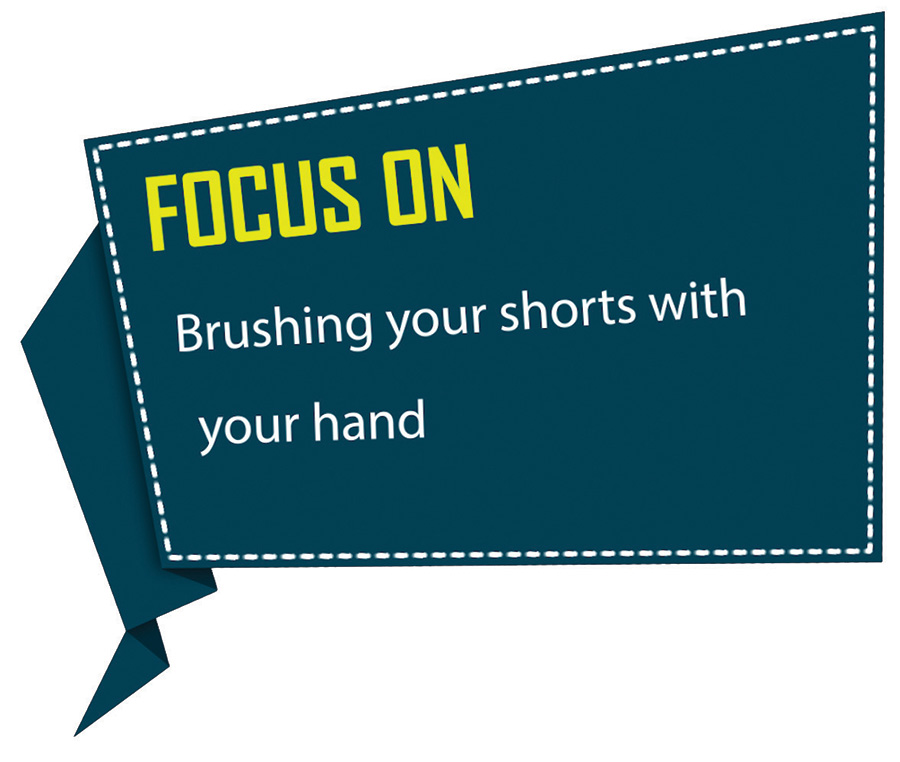
When swinging your arms forward and back, you should not swing them far from the side of your torso. If you hold your arms too far out, you waste energy supporting the weight of your arm. To get your hands and arms closer to the proper position, brush your shorts lightly with your hand.
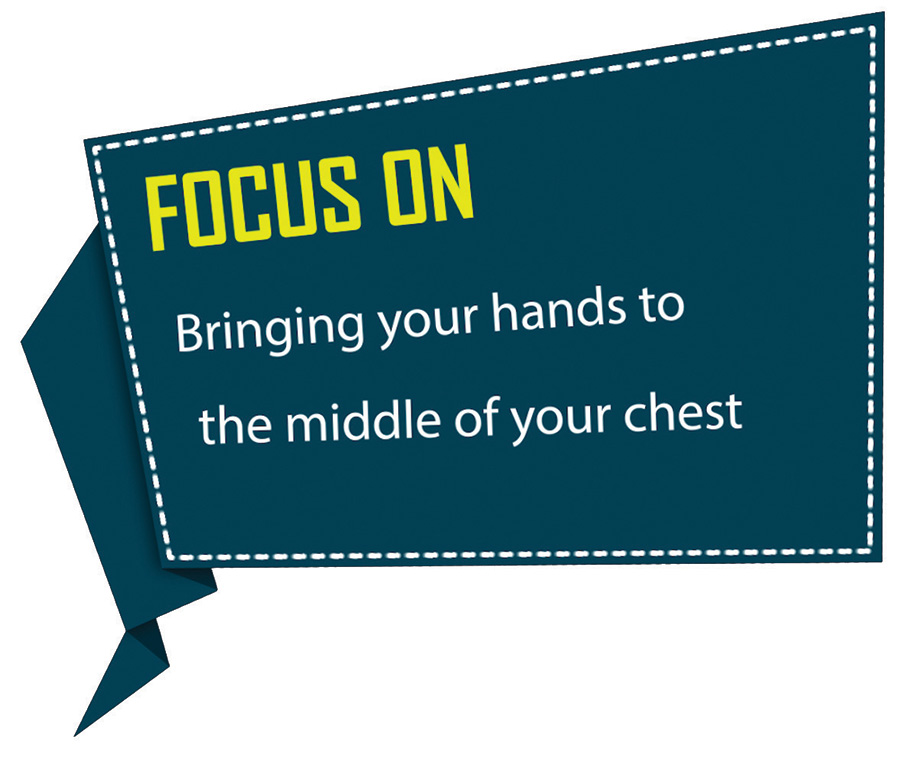
Many walkers violate this concept on both sides of the imaginary line across your chest. While there is some variation in the ending height of the forward arm swing, a good goal for the point of the arc is your chest line. If your hands are swinging above the line, then increase the angle that your forearm makes with your upper arm. In contrast, if your hands aren’t swinging high enough, then decrease the angle your forearm makes with your upper arm.
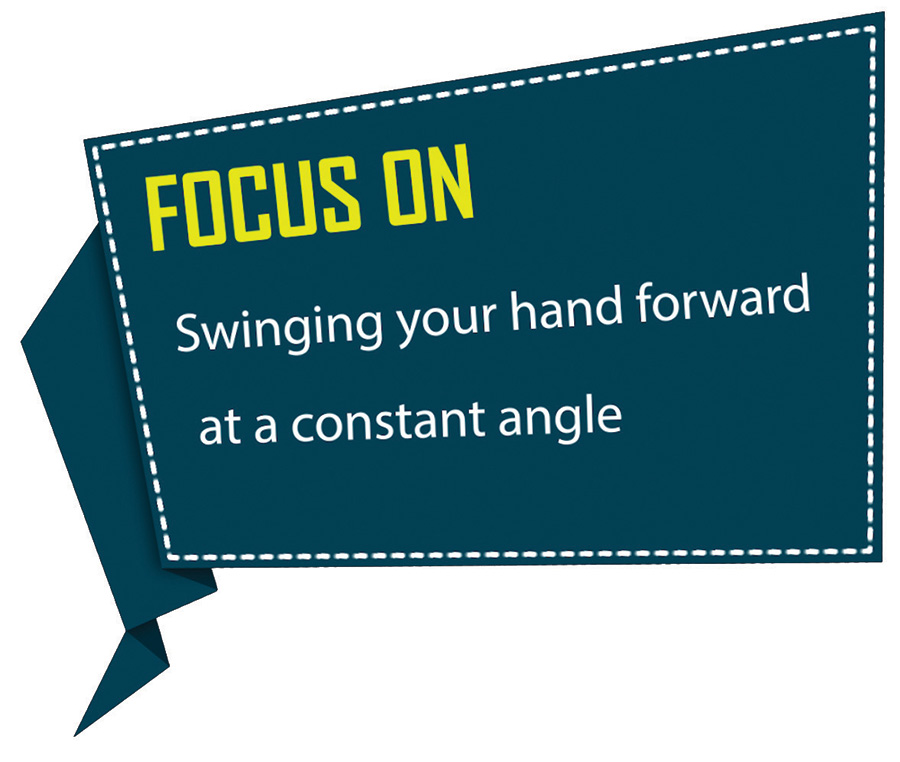
The arm swing should maintain a constant angle between the forearm and upper arm. Do not pump your arm as it swings forward and back. Resist the temptation to close the angle on the upswing and open the angle on the downswing. If you are lucky enough to attend one of our clinics, you can try out our custom arm braces to help you get the proper feel for arm swing.
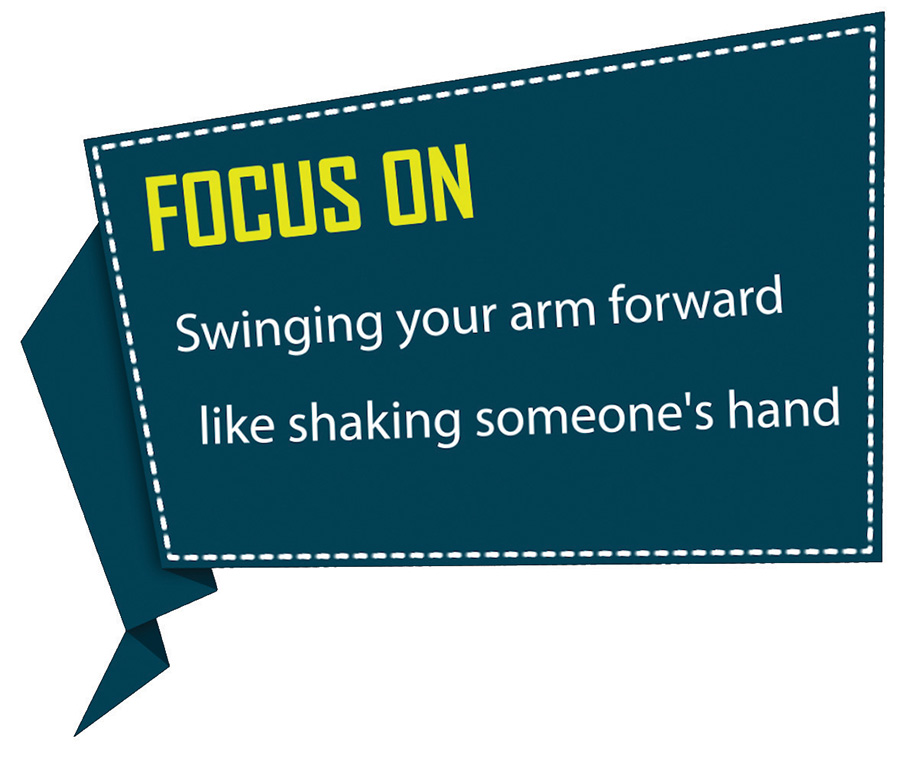
When you reach forward to shake someone’s hand, your hand moves forward on an arc from the side of your hip to cross the front of your body. It should do the same in race walking. The only difference is that when you shake someone’s hand, your arm angle changes, whereas in race walking the arm angle remains constant.

The Biceps stretch is useful because, while race walkers do not pump their biceps muscles during race walking, they do use them to hold the arm at approximately a 90-degree angle while they walk. Go for a long enough walk and your biceps will get tight.
Body Position
Stand up with your feet shoulder width apart.
Steps
- Place your hands together, behind your back, with your palms together.
- Exhale while raising your arms until you feel the stretch.
- Hold for 15 seconds.
- Lower your hands.
- Repeat three times.
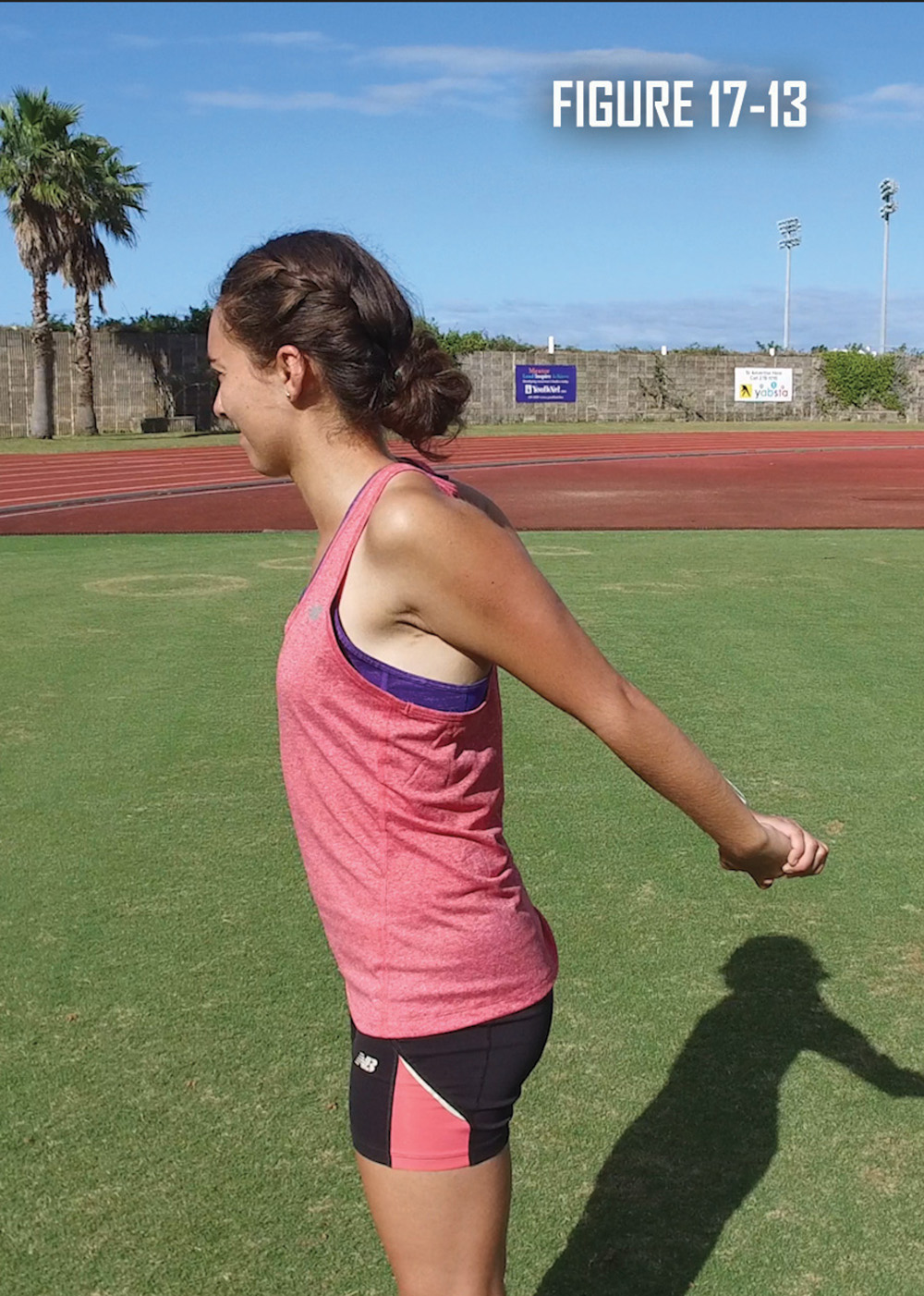

Inflexible triceps muscles cause a reduction of arm angle, leading in turn to a reduction in hip rotation.
Body Position
Stand up straight with your feet shoulder width apart.
Steps
- Bend your right arm back so that you touch your hand to your shoulder.
- Grab your right elbow with your left hand.
- Gently pull your right arm backwards.
- Hold for 15 seconds.
- Repeat with your other arm.
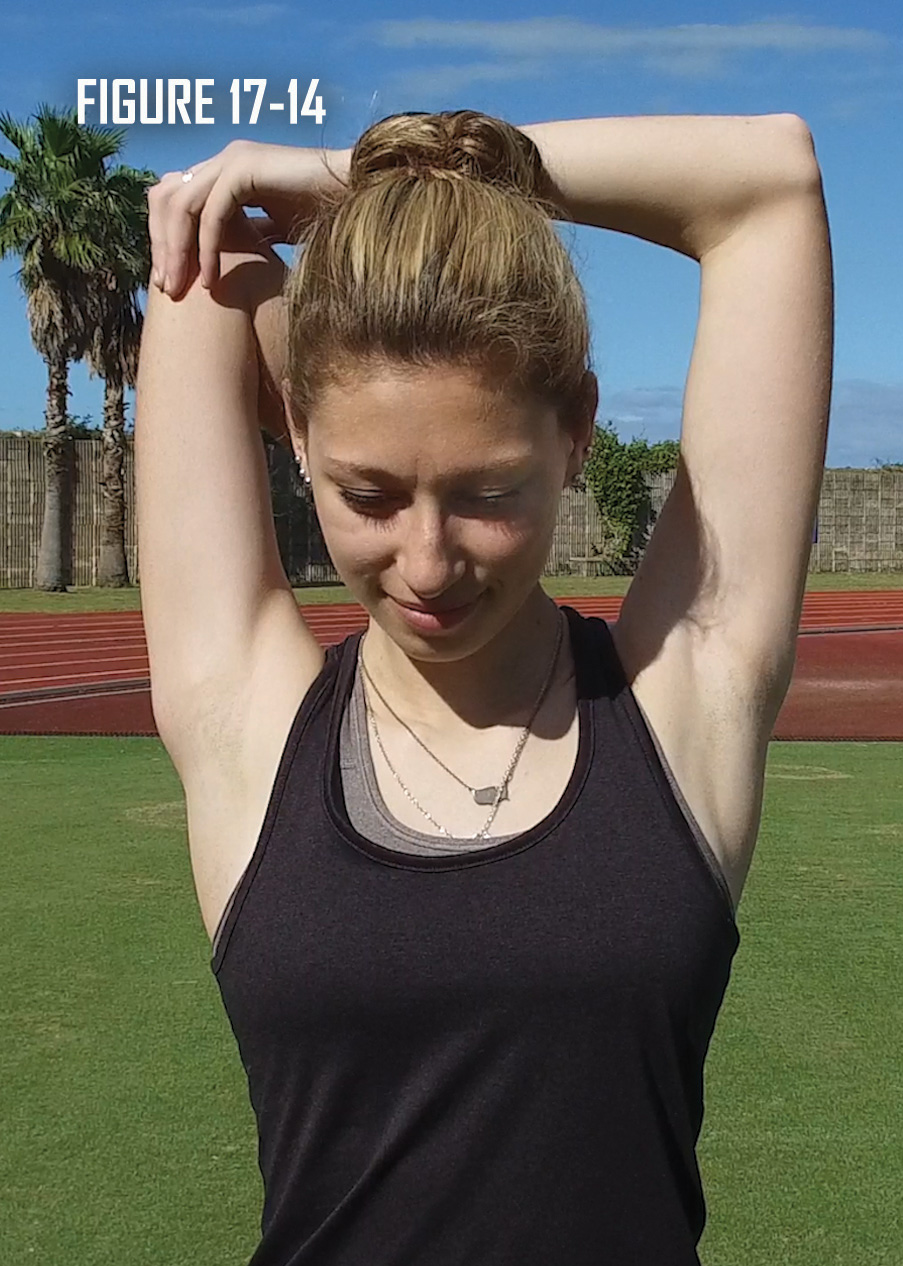

There is nothing better than performing a drill with the same motion as race walking. The single best arm exercise for race walking is to practice the motion of the race walker’s arm swings with elastic bands so that you use your hips properly. The enhanced arm swing forces a greater forward rotation of the hips. Also, if performed in front of a mirror, this exercise can help you develop proper arm motion.
Body Position
Wrap an elastic band around a pole (or anything stable) and place each end in your hands.
Steps
- Swing the hands forward and backward through the full range of motion traveled while race walking.
- Counter your arm swing by pushing your opposite hip forward (Figures 8-3 & 8-4).
- Remember to keep those shoulders relaxed!
- Repeat this exercise for 2 to 10 minutes.
